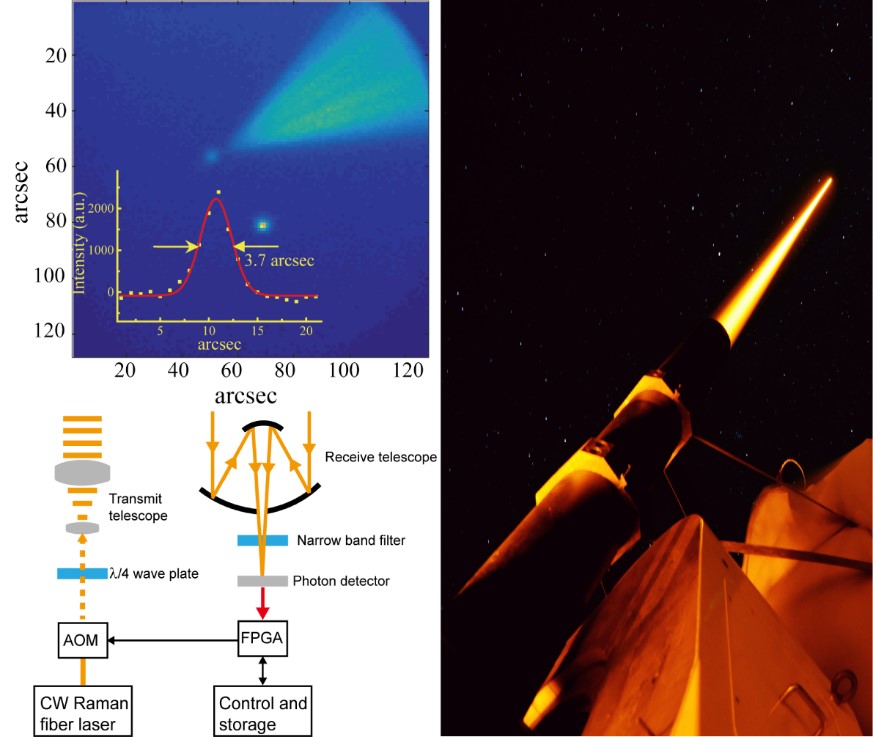
Recently, based on a self-developed high-power yellow laser and gated photon counting technique, the research group from Shanghai Institute of Optics and Fine Mechanics of the Chinese Academy of Sciences (CAS) demonstrated a remote-magnetometry scheme with precession of mesospheric sodium. The results were published on Journal of Geophysical Research: Space Physics.
Considering that the technique of phase sensitive detection is unsuitable for recording low-photon-rate signals, researchers proposed the technique of gated photon counting. It could collect photons entirely from the sodium layer of a specific height, which effectively avoided interference from other sources and had the potential to achieve altitude resolved magnetic field measurements.
In their experiment, which was carried out in Lijiang Observatory, an intensity-modulated laser beam was utilized to optically pump sodium atoms in the mesopause, and a ground-based telescope collected fluorescent echoes to infer the magnetic field.
Researchers measured the magnetic resonance signal successfully and validated this technique. This novel technique provided a powerful tool for mapping and interpreting Earth's lithospheric magnetic fields, monitoring magnetic disturbances in conjunction with the aurora, as well as making long-term measurements of ionospheric currents at polar regions.
The research project was supported by the Institute of Optics and Electronics, Chinese Academy of Sciences.

Figure 1. Schematic diagram and photograph of the experimental setup. (Image by SIOM)

86-10-68597521 (day)
86-10-68597289 (night)

52 Sanlihe Rd., Xicheng District,
Beijing, China (100864)

